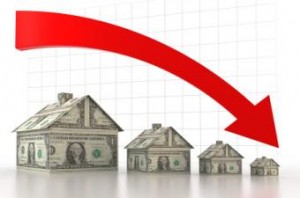 Mortgaged properties for sale have seen huge declines in recent years, and the driving force behind the decrease is the declines in non-current inventory and noncurrent listing share.
Mortgaged properties for sale have seen huge declines in recent years, and the driving force behind the decrease is the declines in non-current inventory and noncurrent listing share.
Using both loan-level mortgage performance and multiple listing service (MLS) data, Black Knight Financial Services' Mortgage Monitor report for April examined the correlation between mortgage characteristics and the likelihood a property will be listed and/or sold.
The report found that delinquent inventory is having a significant impact on available housing market inventory.
“We’re now in the heart of the spring home buying season and, as has been true for several years, there are still reports of tight inventory," said Black Knight Data & Analytics SVP Ben Graboske.
Black Knight reported that the share of homes with mortgages listed for sale is down 22 percent since 2012 and down 5 percent from the same time last year.
"One driver is that while delinquent borrowers are still more than twice as likely to list their homes for sale, there are far fewer of these borrowers, as well as a much lower share of such homes listed for sale, than in 2012," Graboske said.
The report noted that declines in non-current inventory and noncurrent listing share have been a driving factor in the overall decline in mortgaged properties listed for sale.
Overall noncurrent inventory is down 500,000 from last year as of March and down 3 million from March 2012. Black Knight found that the share of non-current mortgaged properties listed for sale has declined from 7.7 percent in 2012 to 3.4 percent in 2016. The share of borrowers that are current on their mortgages and have their property listed for sale is relatively flat from last year and up 10 percent from 2012, but the report said "that increase hasn’t been enough to overcome the decline in non-current listings, contributing to a further tightening of inventory."
Those with adjustable-rate mortgages (ARMs) are more likely to list their homes than those with fixed rates, which is hardly surprising given that buyers often choose ARMs when they plan to stay in their homes for less time. However, borrowers with low fixed interest rates of 4.25 percent or below are less likely to put their homes on the market than those with higher rates.
"This is something to keep an eye on if and when interest rates begin to rise. Should the trend hold true, rising interest rates could put an even greater strain on an already tight housing inventory." Graboske explained.

 theMReport.com Your trusted source for mortgage banking news
theMReport.com Your trusted source for mortgage banking news








